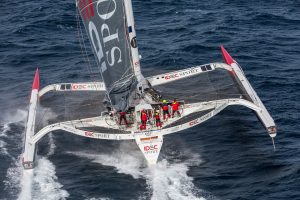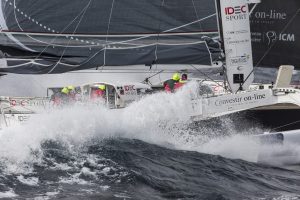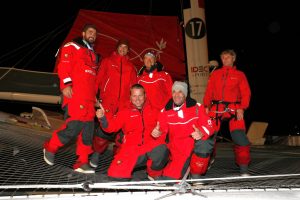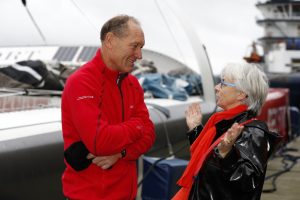After a somewhat chaotic start in variable weather conditions, Francis Joyon and his five crewmembers picked up their pace and are shooting ahead to the southwest of the Canaries.

Before the team’s departure last Sunday, Marcel Van Triest and Francis Joyon formulated a plan, which was meant to start bearing fruit from the Equator onwards. But they didn’t need to wait that far: after three grueling days, the Idec Sport team has established a good position and can finally breathe a little.
“A departure is always very emotional, and this one was brutal,” reported Clément Surtel on Wednesday. “We’re doing well. We’ve avoided much of the wind. The sea is calming down. We’re on track and dealing with a few minor squalls. We’re fighting to get out of the squalls. We’re happy with our average. We need to make a few repairs but nothing serious. We’re just starting to have normal meals – eggs and bacon for me this morning.”
Conditions are improving and the sun has appeared to the delight of the six sailors on board the maxi-trimaran, now heading south at a very decent average of 30 knots. For now, Clément Surtel says that he’s “not paying too much attention to time gaps”. Idec Sport nonetheless has reason to rejoice because it is now only 11 miles behind Loïck Peyron’s 2012 time for this leg.
But while things look positive, Francis Joyon and his team don’t intend to rest on their laurels: the Cape Verde islands stand in their firing line.
Source : www.idecsport-sailing.com








